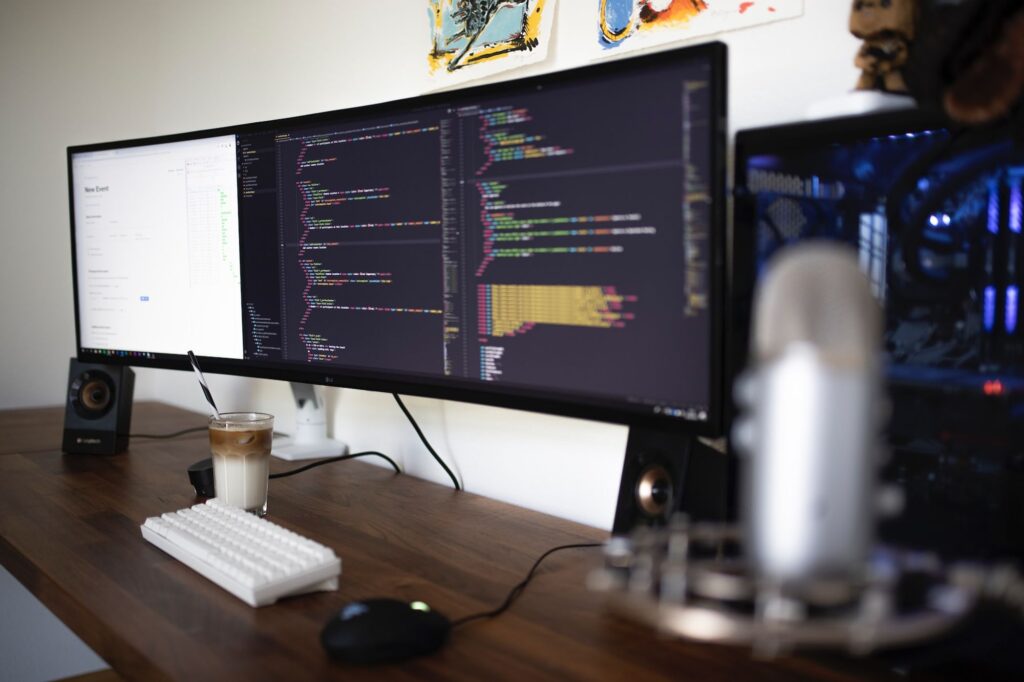
Five Essential Coding Hacks to Write Better, Simpler Code

Are you feeling overwhelmed by your code management processes? Are you really looking for true coding hacks to make your life easier? We certainly know you’re not alone. Writing code can sometimes take a toll on junior and senior developers. It does so on anyone! That also becomes increasingly troublesome given the amount of time coders spend on code management! The latest figures around that percentage have measured about 35% of a developer’s work time on programming that way.
The controllable news on above is that this is mainly happening because we’re kickstarting projects without proper planning or organization. Instead, we commonly focus on the process of writing code all the way to the end. Now, if we’re being honest with each other here, we eventually need to take a step back, organize ourselves and our work in order to move forward. Doing so takes time, we know. Yet, a clear coding guideline can help us. It can also assist us in avoiding daily problems and even making our work easier for clients to understand. So, how about we go into a few more coding tricks today to speed up our coding processes? Here are five coding hacks to get you moving!
1. First Easy Coding Trick: Give Code a Clear Name!
Make code meaningful.
The first coding hack in our hack series is very easy to apply with a quick mindset shift! To get ahead on our work, let’s simply make it a habit to only use clear, meaningful names for our variables and functions.
As our tools are helping us communicate application logic, they should help us get our ideas across to coworkers as much as clients. We truly need to use clear naming practices while staying descriptive. Whenever you try to write “clean code”, practice staying away from ambiguous or abbreviated names. Incorporating such a simple yet effective resource can truly go a long way in better organizing our code!
Take “dxy” as an example. Haven’t you come accross this variable before and wondered what it meant? Rather than forcing readers to search through the entire code to understand it, we can simply use a more descriptive name, like “distanceBetweenXY,” for example. Simple, no?
“Any fool can write code that a computer can understand. Good programmers write code that humans can understand.”
Martin Fowler
2. Coding Tip #2: Stick to Relevant Comments
Commenting code, like much of what we do, is an art. That’s why tip number 2 in our coding hacks series is to describe complex passages.
We know how messy it can get when we start writing comments for every part of our code. It can get really hard to read really quickly! Shift to a genuine search for other readers to understand our reasoning and thought processes. Rip off any potential confusion with concise and clear comments, instead. Otherwise, for as vital as we can find them, complex commenting may fail to make sense to others, which brings on a whole different set of problems.
“Is it possible that software is not like anything else, that it is meant to be discarded: that the whole point is to always see it as a soap bubble?”
Alan J. Perlis
One of the most important coding tricks is to strike a balance with your comments. In a nutshell, be unafraid to remove any unnecessary ones and keep the remaining comments concise and clear.
3. Coding Hacking: On the Use of Consistent Indentation
Following up on above, clear and consistent styling is also essential to make code readable, understandable, and easy to edit. To achieve this, go beyond aesthetics to a logical structure in your code. For that, use indentation. That’s one of the most vital programming tips out there!
While indentation may not impact the function of many programming languages, it can cause issues when using an integrated development environment (IDE). Therefore, establish a consistent and uniform format everyone can follow with ease. Doing so will save so much time, headaches, and even follow-ups!
“Clean code always looks like it was written by someone who cares.”
Robert C. Martin
4. Take Context into Account as Your Coding Trick #4
While it’s important for you to adopt a consistent styling guideline as part of your coding work, it’s also essential to recognize that each project requires different naming rules, styles, and file structures. Those can vary based on factors such as coding language, industry, and client needs. So, keep styling consistent, but also remember to let each project’s context dictate your next course of action.
Normally, a general rule will not fit every client’s specific needs. Threfore, we should use our judgement to determine every project’s ideal approach. Otherwise, a generalized rule applied in every single context can end up being costlier than its required customization in the short and long run.
“Code is like humor. When you have to explain it, it’s bad.”
Cory House
Always keep in mind: applying a one-size-fits-all approach can make your code irrelevant and ambiguous.
5. Number 5 of Our Programming Tips: Refactoring is Inevitable
Let’s wrap up our coding tricks now! For that, did you know how common it is for coders to write up bugs as they work? The rate sits at 70 bugs per 1000 lines at the moment. Just as it happens when writers work on a novel or translators produce text, it’s really hard to spot errors as we’re creating. That’s why some writers, like some coders, take a 24-48 hour review process when it comes to revisions.
“Whenever I have to think to understand what the code is doing, I ask myself if I can refactor the code to make that understanding more immediately apparent.”
Martin Fowler
Refactoring isn’t just a matter of debugging — it’s also about improving the code itself. It involves making code lines clearer, changing architecture, and renaming variables without affecting functionality. It’s also crucial to maintaining code efficency, and one of the most important Python tips and tricks available.
View Organization and Consistency Like Coders’ Best Friends
As programmers, we all know how much we rely on writing good code. While simple or self-explanatory, the essential five coding tips given here are but a great starting point for coding that’s easier to update, debug, and scale. The more you apply these coding hacks to your daily work, the better you’ll become at writing readable code in any language or project.
Tie all the above coding hacks to versatility, an innate thirst for knowledge, the ability to self-correct, and a community of expert programmers, and the demand for your line of work will scale through the roof! This is yet another of the reasons why we’re proud to have such a large network of developers at Nearsure. At this moment, we’re working on a network of over 20,000 engineers, and counting. In all honesty, we wish you growth, speed, efficiency in your day-to-day.
If you’re a developer looking for the next step on your career path, be sure to check out Nearsure’s LinkedIn Page for a list of available job openings, and stay tuned for our latest blog updates, as well!




